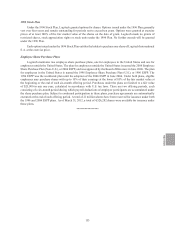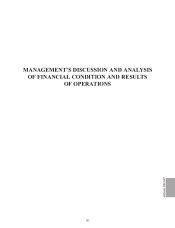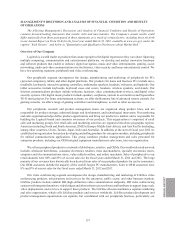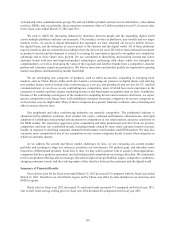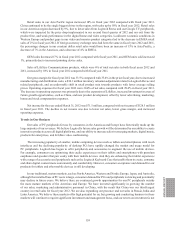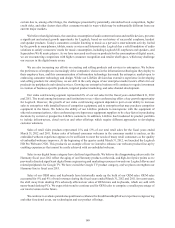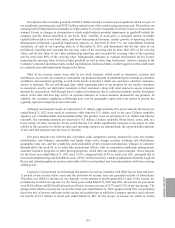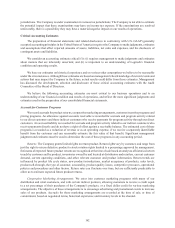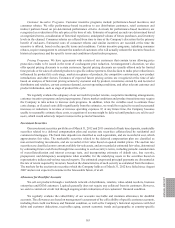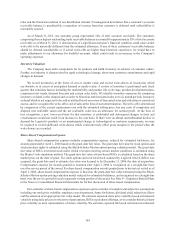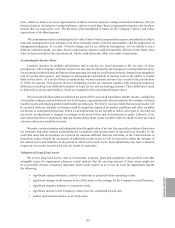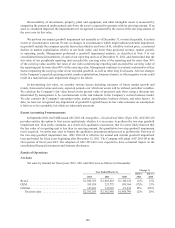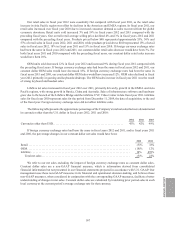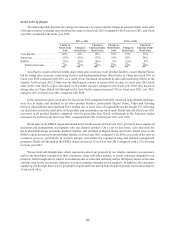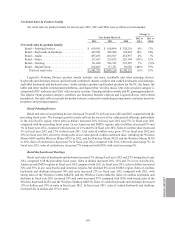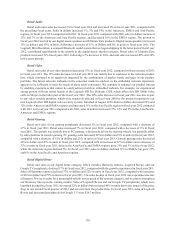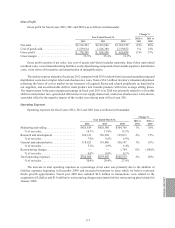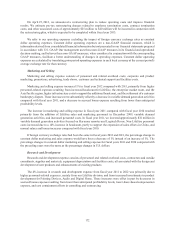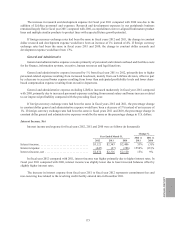Logitech 2012 Annual Report Download - page 173
Download and view the complete annual report
Please find page 173 of the 2012 Logitech annual report below. You can navigate through the pages in the report by either clicking on the pages listed below, or by using the keyword search tool below to find specific information within the annual report.
Customer Incentive Programs. Customer incentive programs include performance-based incentives and
consumer rebates. We offer performance-based incentives to our distribution customers, retail customers and
indirect partners based on pre-determined performance criteria. Accruals for performance-based incentives are
recognized as a reduction of the sale price at the time of sale. Estimates of required accruals are determined based
on negotiated terms, consideration of historical experience, anticipated volume of future purchases, and inventory
levels in the channel. Consumer rebates are offered from time to time at the Company’s discretion for the primary
benefit of end-users. Estimated costs of consumer rebates and similar incentives are recorded at the time the
incentive is offered, based on the specific terms and conditions. Certain incentive programs, including consumer
rebates, require management to estimate the number of customers who will actually redeem the incentive based on
historical experience and the specific terms and conditions of particular programs.
Pricing Programs. We have agreements with certain of our customers that contain terms allowing price
protection credits to be issued in the event of a subsequent price reduction. At management’s discretion, we also
offer special pricing discounts to certain customers. Special pricing discounts are usually offered only for limited
time periods or for sales of selected products to specific indirect partners. Our decision to make price reductions is
influenced by product life cycle stage, market acceptance of products, the competitive environment, new product
introductions and other factors. Estimates of expected future pricing actions are recognized at the time of sale
based on analyses of historical pricing actions by customer and by product, inventories owned by and located at
distributors and retailers, current customer demand, current operating conditions, and other relevant customer and
product information, such as stage of product life-cycle.
We regularly evaluate the adequacy of our accruals for product returns, cooperative marketing arrangements,
customer incentive programs and pricing programs. Future market conditions and product transitions may require
the Company to take action to increase such programs. In addition, when the variables used to estimate these
costs change, or if actual costs differ significantly from the estimates, we would be required to record incremental
increases or reductions to revenue or increase operating expenses. If, at any future time, the Company becomes
unable to reasonably estimate these costs, recognition of revenue might be deferred until products are sold to end-
users, which would adversely impact revenue in the period of transition.
Investment Securities
Our investment securities portfolio as of March 31, 2012 and 2011 consisted of bank time deposits, marketable
securities related to a deferred compensation plan and auction rate securities collateralized by residential and
commercial mortgages. The bank time deposits are classified as cash equivalents, and are recorded at cost, which
approximates fair value. The marketable securities related to the deferred compensation plan are classified as
non-current trading investments, and are recorded at fair value based on quoted market prices. The auction rate
securities are classified as non-current available-for-sale assets, and are recorded at estimated fair value, determined
by estimating future cash flows through time according to each security’s terms, including periodic consideration
of overcollateralization and interest coverage tests, and incorporating estimates of default rate, loss severity,
prepayment, and delinquency assumptions when available, for the underlying assets in the securities based on
representative indices and various research reports. The estimated coupon and principal payments are discounted at
the rate of return required by investors, based on the characteristics of each security as calculated from the indices.
The markets for the auction rate securities which the Company holds as of March 31, 2012 have failed since August
2007 and are not expected to resume in the foreseeable future, if at all.
Allowance for Doubtful Accounts
We sell our products through a worldwide network of distributors, retailers, value-added resellers, business
enterprises and OEM customers. Logitech generally does not require any collateral from its customers. However,
we seek to control our credit risk through ongoing credit evaluations of our customers’ financial condition.
We regularly evaluate the collectibility of our accounts receivable and maintain allowances for doubtful
accounts. The allowances are based on management’s assessment of the collectibility of specific customer accounts,
including their credit worthiness and financial condition, as well as the Company’s historical experience with bad
debts and customer deductions, receivables aging, current economic trends and geographic or country-specific
ANNUAL REPORT
163


